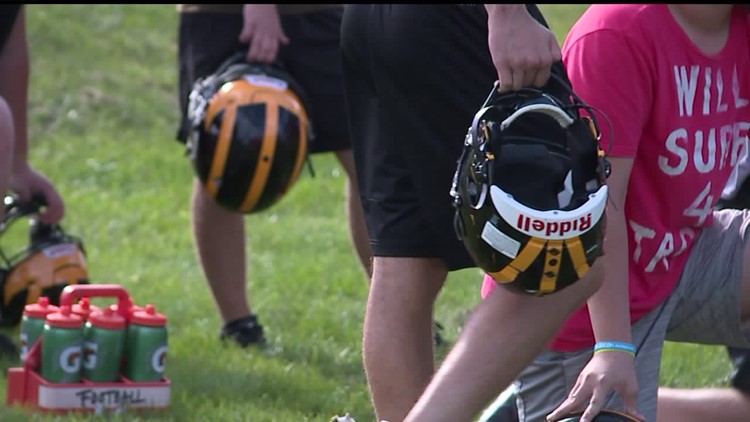HARRISBURG, Pa. --- According to the Centers for Disease Control and Prevention (CDC), emergency room visits for sports and recreation-related Traumatic Brain Injuries (TBI) among children and teens have increased 60 percent over the last decade.
With fall sports, such as football, field hockey and soccer, in the early stages of its seasons, state health officials are working to educate the public on awareness and prevention.
Dr. Brenda Eagan-Johnson, program coordinator with BrainSTEPS, a network of consultants helping students with brain injuries, said it's important to know the signs of brain injuries in children because the physical appearance of a child might not tell the whole story.
"Effects of brain injuries in children are not always immediately apparent and may not become evident until the child reaches important developmental stages. Over time, difficulties may emerge as demands on parts of the brain originally injured are increased," said Dr. Eagan-Johnson.
Dr. Eagan-Johnson said they work with school districts on a "return to learn" model.
It focuses on keeping a focus on a student with a brain injury to ensure they're maintaining academic performance and attention.
She said BrainSTEP accepts concussion referrals if symptoms linger for four to six weeks.
She explained that with the right support, it can shorten recovery time for a student.
“Approximately 70 percent of students should recover within the first four weeks," said Dr. Eagan-Johnson.
Head injury management and prevention efforts on the field, according to Kristen Schaffer, the head athletic trainer at Red Lion Junior High and High School, are ever evolving.
“Things are constantly changing and things are changing to try to protect the kids more, the best we can," said Schaffer.
She said that state law requires any student athlete who reports concussion symptoms must be cleared by a physician before they can return to sport.
Even if a player is cleared, Schaffer said they put players through a five-day return to play protocol with aims of slowly getting them back up to speed.
“Sometimes kids feel great when they’re resting but as they’re running or jogging, they start to get symptoms that come back. If that was the case, we slow their progression until they’re feeling much better," said Schaffer.
She said their trainers have multiple tools at their disposals, including baseline impact testing to compare how players feel healthy as opposed to injured.
They also have roughly 30 football helmets with impact sensors that Schaffer said can alert trainers to a player who sustained a harder than usual hit to the head.
Schaffer said these tools aren't an "end all, be all" but it provides an extra set of eyes and support to make sure no injuries go unnoticed.
Dr. Eagan-Johnson said the latest data from the state Department of Health from 2006 says about 4,000 children are hospitalized with brain injuries in the commonwealth, per year.
However, she said they estimate there are approximately 22,000 concussions in children in Pennsylvania every year and it is underreported since most go without hospitalization.
For more information on TBI, follow the link here to the state Department of Health website.



